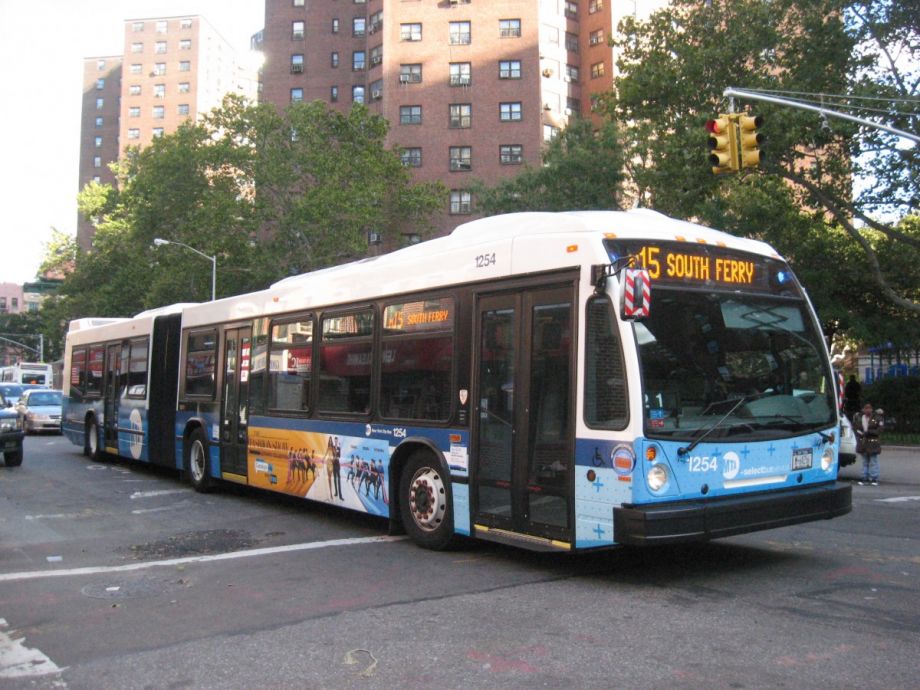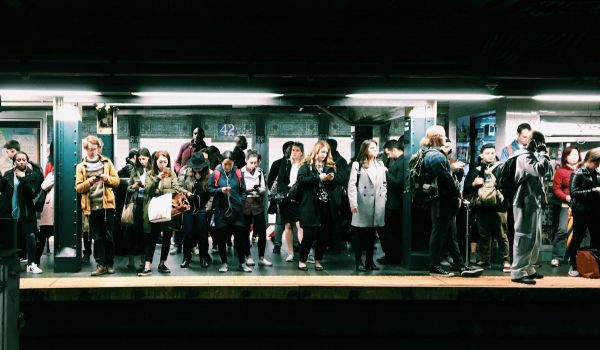The lowly city bus may not get a lot of love, but for the time being, it’s the workhorse of American transit. More than half of all mass transit trips in the U.S. are by bus, and most transit agencies don’t even offer any other mode. So with buses being the only transit option for most Americans, it’s worth looking into how to improve the experience.
To that end, the Transportation Research Board commissioned Dan Boyle & Associates, a consulting firm, to survey agencies across North America and synthesize existing research on improving bus speeds into a guide of best practices to help agencies speed up their vehicles. (For all the talk of the romance of streetcars or the experience of riding trains, the desire to get where you need to go as quickly as possible is universal.)
The report gives a number of recommendations about ways to speed up buses, which Streetsblog has covered, ranging from stop consolidation (having a stop every block or two is not very efficient) to fare collection to bus lanes.
Fifty-nine agencies responded to the survey, and of those, more than three-quarters reported that bus speeds have declined over the past five years. Half rated their efforts at improving bus speeds as somewhat successful, while a third reported no improvement; only 6 percent said their actions were very successful.
“Although there is no consensus regarding the single most effective action to take to improve speeds,” the authors wrote, “stop consolidation ranks highest among effective non-BRT actions.” (Bus rapid transit, or BRT, is essentially a full-fat approach, using all methods, making it impossible to discern which was the most effective at increasing speeds.)
When asked which one aspect of the design and implementation of bus efficiency programs they would change, the leading answer was that they would’ve employed more “traffic engineering measures, particularly signal priority for buses and dedicated bus lanes on arterial [roads].”
The report also includes a number of case studies, including one on New York City’s new Select Bus Service (SBS) routes. The Metropolitan Transportation Authority has taken the approach of focusing upgrades on a handful of high-ridership bus routes, giving them the bus rapid transit (or, at least, close to it) treatment. While nearly all high-ridership buses have “limited” versions featuring fewer stops, SBS routes were given even wider stop spacing and also features like dedicated curbside lanes during rush hours and off-board fare payment, enforced by occasional ticket checks and fines.
Citing figures that were previously unpublished, the MTA reported healthy speed boosts on its SBS routes. The SBS route on First and Second Avenues in Manhattan saw the most modest improvement — just 18 percent faster — going from 6.75 miles per hour on the old limited route to 8 mph on the new SBS version. The route on Fordham Road in the Bronx was sped up by a third by SBS, rising from 9 mph to 12 mph, while Staten Island’s Hylan Boulevard route went from 10 mph to 13 mph. (Interestingly, Staten Island’s route got the least upgrades — only 2.2 miles of dedicated lanes along its 15-mile route, and fares are still paid the traditional way, with all-door boarding not allowed.)
The report also notes that while the introduction of the MetroCard fare payment system was good for bus ridership in that it allowed for free transfers, the move away from tokens did no favors for buses’ speeds. “More boardings affected bus speeds negatively,” wrote the report’s authors. “Swiping, or more precisely ‘dipping,’ the MetroCard takes longer than depositing a token in the fare box.” While proof-of-payment ticketing would dramatically reduce loading times, the MTA appears to be betting on contactless fare cards, which wouldn’t speed up boarding as much (since it still requires a single-file line in front of the driver) and “remains an elusive technology for the agency,” as the study generously describes the MTA’s love/hate relationship with technology.
The Works is made possible with the support of the Surdna Foundation.
Stephen J. Smith is a reporter based in New York. He has written about transportation, infrastructure and real estate for a variety of publications including New York Yimby, where he is currently an editor, Next City, City Lab and the New York Observer.

















